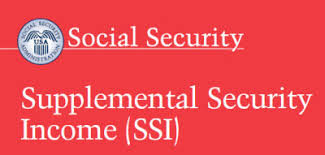Raise the SSI Threshold

Harold Pollack makes a very important policy point in this Democracy Journal piece.
The Biden Administration and Congress seek immediate measures to improve peoples’ lives. Our dysfunctional politics being what they are, immediate help is best provided through simple things that can be passed by majority vote within budget reconciliation. Fortunately, with one sentence, we can fix one of the stupidest and cruelest regulations in American social policy—one that forces millions of Americans with disabilities to remain in poverty.
That sentence would raise the $2,000 countable financial asset limit for eight million Supplemental Security Income (SSI) recipients, most of whom live with significant disabilities. Under this rule, you’re allowed to keep your home, a vehicle, your wedding ring, and some personal effects. And that’s pretty much it. Beyond these, your checking account, your retirement, and your other financial assets can’t add up to more than $2,000, and $3,000 for a married couple.
The limit’s original purpose was to prevent SSI from becoming a universal entitlement. At some level, that’s understandable. Although many progressives disagree, most Americans do not want affluent people to qualify for a monthly cash benefit and for Medicaid in the event they become disabled.
Even if one accepts that basic premise, the $2,000 limit is ridiculously low. It hasn’t been raised since 1989. In 1972, when SSI was enacted into law, the asset limit was $1,500 for individuals, $2,250 for married couples. Had these limits kept pace with inflation, they would be $9,500 and $12,675 today.
This policy prevents people with disabilities from managing their lives. You can’t maintain a strategic reserve to cover unexpected expenses, to fix your car or a blown furnace, to manage family emergencies, let alone to address the myriad practical challenges and uncovered medical expenses that typically accompany disability.
As so often occurs, the $2,000 limit creates unintended complications and disparities, too. It favors homeowners over renters. Its treatment of spousal assets prevents couples from marrying. It leads people to take problematic under-the-table jobs. It induces people to manage their assets through complex strategies that advantage middle-class families with the means and access to financial services to navigate arcane bureaucratic rules.
More subtly, the asset limit pushes families to pursue financial shenanigans that are illegal, risky, or simply unwise. Suppose you are a teacher with two children. Your son became disabled in his late twenties, now uses a wheelchair, and relies on SSI. Your daughter is married and does not live with a disability. To finesse the asset limit, you bequeath her your home. You let her know—but don’t put to paper—that half of that inheritance is really your son’s, intended to meet his needs. Then you pass away. Three years later, your daughter has a messy divorce. Much of the money intended for your son is lost on legal fees or split in the divorce. Or maybe your kids have a falling-out. She keeps the money. He has no legal recourse. If SSI had a more reasonable asset limit (as noted below, say $50,000), families would still face myriad challenges in such situations. At least they would have many more options to navigate these challenges in a transparent and sensible way.
So much of what passes for the American welfare state consists of tiny amounts of money and so much bureaucracy and ridiculous rules that it actively hurts people’s lives. If you’ve ever been in a grocery store line behind someone buying perfectly healthy food with their food stamps and are then told that this and that now no longer qualify, you know what I mean. You can feel their embarrassment and you just feel awful (not to mention annoyed at a system making me wait in line for longer). We this this everywhere. And the benefits are so stingy in the first place. This is an obvious thing that needs to be fixed. All of these benefits at the very least must be tied to inflation so that the conditions don’t get worse. Then we fight to make them better. But this is an unacceptable situation and we have the power to change it.


